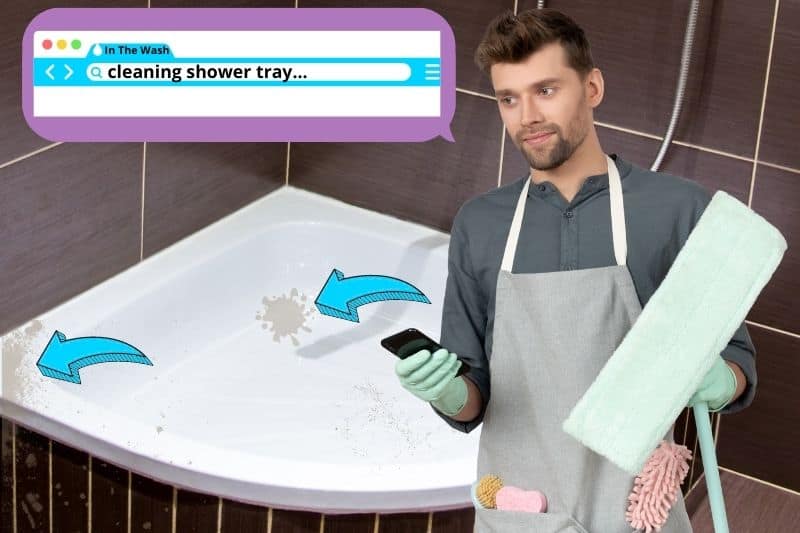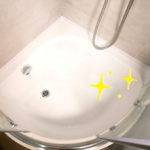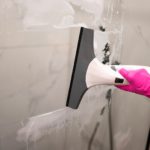Shower trays are used almost every single day, twice or three times a day in some households, which means that these little trays are harbouring lots of dirt!
But, it’s not just hygienic to keep a shower tray clean. A clean shower tray also looks way more inviting and comfortable for a user… Let’s face it, nobody really wants to step into a rusty, soaped-up shower.
And also, regularly maintaining your shower tray means that it’ll stick around for longer, and you may not have too many showery issues to handle.
So, how exactly do you clean a shower tray? Keep on reading and you’ll find out how!
Steps to Take Before You Start
Here are a few small steps that you need to take before you dive right into cleaning your shower tray…
- Open a window.
- Use your bathroom’s extractor fan.
- Clear everything out of your shower tray – soaps, shampoo, and mat for example.
- Remove any hair that you can see from the drain.
Let’s start cleaning your shower tray!
How to Clean a Shower Tray
Shower trays are usually filled with three kinds of dirt: soap build-up, limescale, and rust. Below I’ll explain how to remove these three kinds of dirt from your shower tray.
Remember, in some cases, you may have more than one problem, so you may need to double up on some steps!
Removing soap build-up

Shower trays will inevitably get congested with soap residue over time. It’s really not an uncommon problem and it’s an issue that can be dealt with in no time at all.
Follow the steps below to remove any soapy builds from your shower trays.
Here’s what you need:
- White vinegar
- Spray bottle
- Washing up liquid
- Clean cotton cloth
- Showerhead
Here are the steps you need to follow:
- Ensure that the shower tray is ready for cleaning and make sure there is enough ventilation in the bathroom.
- Pop 100 ml of white vinegar into a microwave-safe bowl.
- Heat the white vinegar up in the microwave for about one minute/until hot.
- Carefully pour the hot white vinegar into the spray bottle.
- Add about 100 ml of washing up liquid to the spray bottle as well.
- Shake well.
- Spray the mixture onto the soapy areas in your shower tray – use plenty of the mix!
- Wait 30 minutes for the mixture to work its magic.
- Dampen your cotton cloth and start to wipe the mixture off the surface.
- Grab your shower head and pop it on, a warm temperature will do, and rinse the remaining mixture away.
Keeping on top of your cleaning will prevent too much soap from building up – make a habit of wiping your shower and its tray down when you’re done with it.
Removing limescale build-up
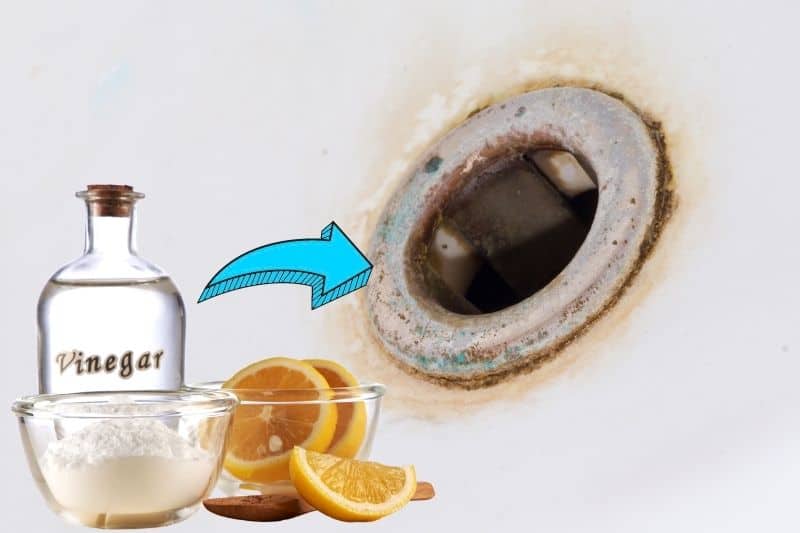
If you live in a hard water area your shower tray may be more prone to suffering from limescale build-up. While this isn’t a major problem, it would be better for you and your shower tray if you stayed on top of the issue.
Limescale build-ups can be a little bit more time-consuming to remove in comparison to soap build-ups, but the cleaning process isn’t too difficult.
Here’s what you need:
- White vinegar
- Lemon juice
- Jug
- Bicarbonate of soda
- Soft sponge
- Showerhead
Here are the steps you need to follow:
- Get your shower tray ready and make sure you open a window.
- Dry your shower tray before you start to clean it.
- Pop about 100 ml of white vinegar into a microwave-safe bowl.
- Heat the white vinegar up in the microwave until it is hot.
- Grab your jug and pour the hot white vinegar into it.
- Add about 30 ml of lemon juice to the jug.
- Put around half a cup of bicarbonate of soda into the jug.
- Stir well.
- You need to create a thick paste, so keep on adding small amounts of bicarbonate of soda to the jug until you get the right consistency.
- Keep on stirring.
- Spread the paste in the jug over all of the limescale-affected areas.
- Wait about an hour.
- Use the showerhead to clean off the paste.
- You may need to use a soft sponge to wipe away any tough paste.
Removing rust build-up
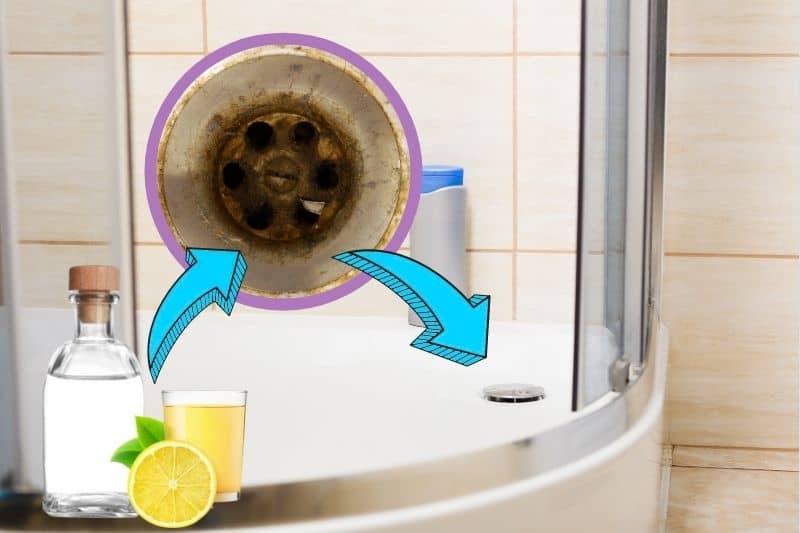
Rust build-ups in a shower tray are very unattractive, so it’s best to deal with them really quickly so that the problem doesn’t get worse!
Here’s what you need:
- White vinegar
- Lemon juice
- Showerhead
- Old towel
- Soft sponge
Here are the steps you need to follow:
- Pour a generous amount of white vinegar onto the rusted area.
- Pour an equal amount of lemon juice onto the affected area.
- Leave the mixture to sit like this for two hours.
- Use your shower head to remove the mixture from the shower tray.
- You can rub gently at the affected area with a soft sponge to remove extra rust.
- Dry the tray with an old towel.
- If rust is still present, follow the steps for ‘Removing limescale build-up’ above but leave the paste to rest on the rust for up to three hours.
- Wash the paste away with warm water from the showerhead.
How Often Should You Clean a Shower Tray?

Ideally, a shower tray should be wiped down, at a minimum, after every use. However, you can clean the tray every few days if this suits your schedule better.
A deep clean of a shower tray should be performed every few weeks, as this will help to limit soapy build-ups, limescale and can stop potential rust patches from forming.
Keeping Your Shower Tray Cleaner for Longer
Here are a few quick and easy tips to keep in mind:
- Try and wash your shower tray down when you’re finished using the shower. The hot water from the shower can help to dislodge dirt, so it’s a really good time to give your tray quick spruce up.
- Keep a clean cloth near your shower so you remember to wipe the tray, and any other areas in your shower, down when you’re done.
- It’s worth keeping a bottle of multi-purpose cleaner in your bathroom, this cleaner can be used for a variety of cleaning jobs!
- Always make sure that your bathroom is kept well ventilated when your shower is on, this will limit the amount of mould that grows in/around the seals in your shower’s tray.
- If you see obvious dirt, like hair, be sure to remove it sooner rather than later or it may block the drain in the shower’s tray and the dirty water won’t go down the plug.
- Invest in a mould cleaning spray, so that you can keep the sealant around your shower tray looking clean.

Bethan has a passion for exploring, reading, cooking and gardening! When she’s not creating culinary delights for her family, she’s concocting potions to keep her house clean!
